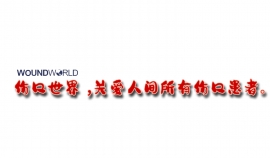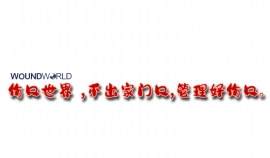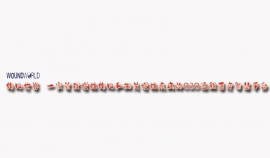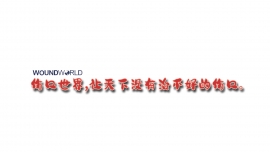文献精选
Atsushi Ikeda1,2 · Yosuke Fukunaga1 · Takashi Akiyoshi1 · Satoshi Nagayama1 · Toshiya Nagasaki1 · Tomohiro Yamaguchi1 · Toshiki Mukai1 · Yukiharu Hiyoshi1 · Tsuyoshi Konishi1,3
Received: 7 January 2021 / Accepted: 27 January 2021 © The Author(s) 2021
Abstract
Objectives This prospective observational study aimed to clarify the incidence and independent risk factors of wound infection after laparoscopic surgery for primary colonic and rectal cancer.
Methods A prospective surveillance of surgical site infection (SSI) was conducted in consecutive patients with primary colorectal cancer, who underwent elective laparoscopic surgery in a single comprehensive cancer center between 2005 and 2014. The outcomes of interest were the incidence and risk factors of wound infection.
Results In total, 3170 patients were enrolled in the study. The overall incidence of wound infection was 3.0%. The incidence of wound infection was significantly higher in rectal surgery than in colonic surgery (4.7 vs. 2.1%, p<0.001). In rectal surgery, independent risk factors for developing wound infection included abdominoperineal resection (p<0.001, odds ratio [OR]=11.4, 95% confidence interval [CI]: 5.04–24.8), body mass index (BMI)≥25 kg/m2 (p=0.041, OR=1.97, 95% CI, 1.03–3.76), and chemoradiotherapy (p=0.032, OR=2.18, 95% CI, 1.07–4.45). In laparoscopic colonic surgery, no significant risk factors were identified.
Conclusions Laparoscopic rectal surgery has a higher risk of wound infection than colonic surgery. Laparoscopic rectal surgery involving abdominoperineal resection, patients with higher BMI, and chemoradiotherapy requires careful observation in wound care and countermeasures against wound infection.
Tsuyoshi Konishi, 该Email地址已收到反垃圾邮件插件保护。要显示它您需要在浏览器中启用JavaScript。 | 1 Department of Gastroenterological Surgery, Cancer Institute Hospital of Japanese
Foundation for Cancer Research, Tokyo, Japan. 2 Department of Surgery, Graduate School of Medicine, Kyoto University, Kyoto, Japan. 3 Department of Surgical Oncology, The University of Texas, M.D. Anderson Cancer Center, 1400 Pressler Street Unit 1484, Houston, TX 77030, USA.
Thomas Rauer1 · Eva Friedl1 · Jamison G. Gamble2 · Boris A. Zelle3 · Hans‑Christoph Pape1 · Roman Pfeifer1
Received: 3 August 2022 / Accepted: 22 November 2022 © The Author(s) 2022
Abstract
Introduction The main objective of this study is to examine chronic pain and limping in relation to lower extremity and pelvic fracture location in addition to fracture combinations if multiple fractures are present on the same leg that have not been previously reported. We hypothesize that fracture pattern and location of lower extremity and pelvis fractures of multiple injured patients influence their long-term pain outcome.
Materials and methods Retrospective cohort study. Patients with treated multiple lower limb and pelvic fractures at a level 1 trauma center and followed up for at least 10 years postinjury were assessed. Lower leg pain subdivided into persistent, load-dependent and intermittent pain, as well as limping were recorded by using self-administered patient questionnaires and standardized physical examinations performed by a trauma surgeon. Descriptive statistics were used to present comparative measurements between groups.
Results Fifty-seven percent of patients (n=301) showed chronic lower limb pain 10 years postinjury. Ten percent of all patients with chronic pain displayed persistent pain, and here the most common fracture combination was tibial shaft fractures in combination with femoral shaft or proximal tibial fractures (13%). One hundred fifty-one patients reported load-dependent pain, with the most common fracture combinations being fractures of the foot in combination with femoral shaft fractures or distal tibial fractures (11%). One hundred twenty patients reported intermittent pain, with the most common fracture combinations involving the shaft of the tibia with either the femoral shaft or distal tibia (9%). Two hundred fifteen patients showed a persistent limp, and here the most common fractures were fractures of the femoral shaft (19%), tibial shaft (17%), and pelvis (15%).
Conclusions In multiple injured patients with lower extremity injuries, the combination of fractures and their location are critical factors in long-term outcome. Patients with chronic persistent or load-dependent pain often had underlying femoral shaft fractures in combination with joint fractures.
Keywords Long-term outcome · Lower limb · Multiple injuries · Acetabulum · Chronic pain · Polytrauma
Thomas Rauer
该Email地址已收到反垃圾邮件插件保护。要显示它您需要在浏览器中启用JavaScript。
1 Department of Trauma Surgery, University Hospital Zurich, 8091 Zurich, Switzerland
2 St. George’s University School of Medicine, St. George, Grenada
3 Department of Orthopedics, University of Texas Health Science Center at San Antonio, San Antonio, TX, USA
Yoichi Nakagawa1 , Hiroo Uchida1* , Akinari Hinoki2 , Chiyoe Shirota1 , Wataru Sumida1 , Satoshi Makita1 , Hizuru Amano1 , Masamune Okamoto1 , Aitaro Takimoto1 , Seiya Ogata1 , Shunya Takada1 , Daiki Kato1 and Yousuke Gohda1
Abstract
Background: Omphalocele is a congenital abdominal wall defect of the umbilical cord insertion site. A giant omphalocele, with a fascial defect>5 cm in diameter and/or containing>50% of the liver within the hernia sac, can be challenging for pediatric surgeons. Recently, negative pressure wound therapy has been reported as an effective management for giant omphaloceles; however, it is not recommended for an infected wound with necrotic tissue as it may exacerbate infection. We adopted negative pressure wound therapy with irrigation and dwell time (NPWTi-d) for a case of a ruptured giant omphalocele. Artificial membranes, followed by artificial dermis, were used to promote fibrous capsule formation, and then NPWTi-d was used to promote granulation while controlling infection. However, studies have not been conducted regarding NPWTi-d for ruptured giant omphaloceles; hence, we present our treatment experience with NPWTi-d for a giant omphalocele.
Case presentation: The patient was a boy born at 38 weeks and 3 days of gestation, weighing 1896 g. He was diagnosed with a ruptured giant omphalocele with a total liver and intestine defect hole of 10 cm × 10 cm. The patient underwent silo placement using an artificial mesh, followed by plicating the artificial mesh at 4 days of age. The herniated viscera were gradually reduced into the abdominal cavity; however, the defect size was still large. Hence, a collagen-based artificial dermis was patched on the defect hole. After creating a fresh and smooth granulated tissue, NPWTi-d was applied at 33 days of age to promote granulation and control infection. We used the 3 M™ V.A.C.® Ulta Therapy Unit with 3 M™ VeraFlo™ therapy. NPWTi-d was stopped at 60 days of age when the granulation tissue was well formed including at the artificial dermis site. The wound was managed with prostandin ointment and appropriate debridement, resulting in complete epithelialization at 5 months of age.
*Correspondence: 该Email地址已收到反垃圾邮件插件保护。要显示它您需要在浏览器中启用JavaScript。
1 Department of Pediatric Surgery, Nagoya University Graduate School of Medicine, 65 Tsurumai-cho, Showa-ku, 466-8550 Nagoya, Aichi, Japan Full list of author information is available at the end of the article
© The Author(s) 2022. Open Access This article is licensed under a Creative Commons Attribution 4.0 International License, which permits use, sharing, adaptation, distribution and reproduction in any medium or format, as long as you give appropriate credit to the original author(s) and the source, provide a link to the Creative Commons licence, and indicate if changes were made. The images or other third party material in this article are included in the article’s Creative Commons licence, unless indicated otherwise in a credit line to the material. If material is not included in the article’s Creative Commons licence and your intended use is not permitted by statutory regulation or exceeds the permitted use, you will need to obtain permission directly from the copyright holder. To view a copy of this licence, visit http://creativecommons.org/licenses/by/4.0/. The Creative Commons Public Domain Dedication waiver (http://creativeco mmons.org/publicdomain/zero/1.0/) applies to the data made available in this article, unless otherwise stated in a credit line to the data.
Conclusions: Artificial membranes followed by artificial dermis were used to promote a fibrous capsule and artificial dermis granulation, which protects against organ damage. NPWTi-d achieved better control of infection and promoted wound healing. NPWTi-d combined with artificial dermis can effectively treat ruptured giant omphaloceles.
Keywords: Negative pressure wound therapy, Negative pressure wound therapy with irrigation and dwell time, Omphalocele
Jeremy Meyer1,2,3 • Elin Roos4 • Richard Justin Davies3 • Nicolas Christian Buchs1,2 • Fre´de´ric Ris1,2 • Christian Toso1,2
Accepted: 25 December 2022© The Author(s) 2023
Abstract
Background Prophylactic negative-pressure wound therapy (pNPWT) may prevent surgical site infection (SSI) after laparotomy, but existing meta-analyses pooling only high-quality evidence have failed to confirm this effect. Recently, several randomized controlled trials (RCTs) have been published. We performed an updated systematic review and meta-analysis to determine if pNPWT reduces the incidence of SSI after laparotomy. Methods MEDLINE, Embase, CENTRAL and Web of Science were searched on the 25.08.2021 for RCTs reporting on the incidence of SSI in patients who underwent laparotomy with and without pNPWT. The systematic review was compliant with the AMSTAR2 recommendation and registered into PROSPERO. Risk ratios (RR) for SSI in patients with pNPWT, and risk difference (RD) between control and pNPWT patients, were obtained using random effects models. Heterogeneity was quantified using the I 2 value, and investigated using subgroup analyses, funnel plots and bubble plots. Risk of bias of included RCTs was assessed using the RoB2 tool. Results Eleven RCTs were included, representing 973 patients who received pNPWT and 970 patients who received standard wound dressing. Pooled RR and RD between patients with and without pNPWT were of, respectively, 0.665 (95% CI 0.49–0.91, I 2 : 38.7%, p = 0.0098) and -0.07 (95% CI -0.12 to -0.03, I 2 : 53.6%, p = 0.0018), therefore demonstrating that pNPWT decreases the incidence of SSI after laparotomy. Investigation of source of heterogeneity identified a potential small-study effect. Conclusion The protective effect of pNPWT against SSI after laparotomy is confirmed by high-quality pooled evidence.
Jeremy Meyer
该Email地址已收到反垃圾邮件插件保护。要显示它您需要在浏览器中启用JavaScript。
1 Division of Digestive Surgery, University Hospitals of Geneva, Rue Gabrielle-Perret-Gentil 4, 1211 Geneva 14, Switzerland
2 Unit of Surgical Research, Medical School, University of Geneva, Geneva, Switzerland
3 Cambridge Colorectal Unit, Addenbrooke’s Hospital, Cambridge University Hospitals NHS Foundation Trust, Cambridge, UK
4 Department of Global Public Health, Karolinska Institutet, Solna, Sweden
Abbreviations
NNT Number needed to treat
OR Odds ratio
pNPWT Prophylactic negative-pressure wound therapy
RCT Randomized controlled trial
RD Risk difference
SSI Surgical site infection




